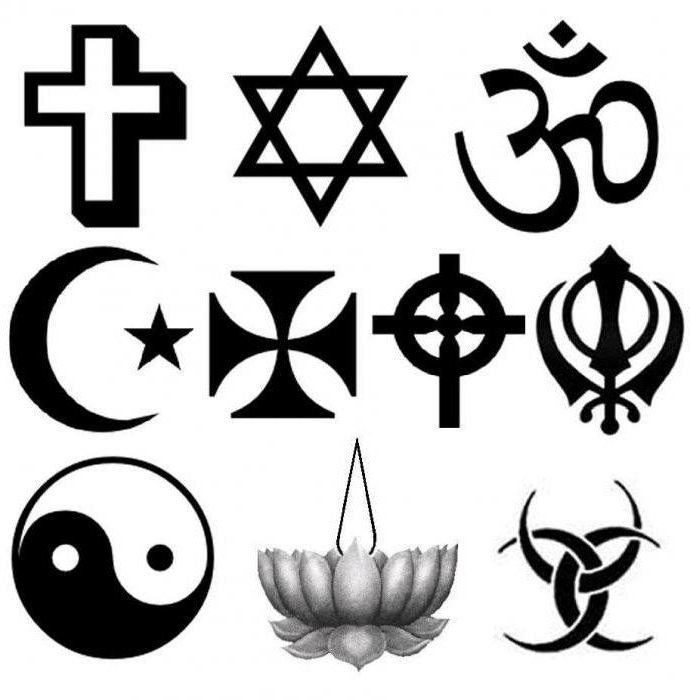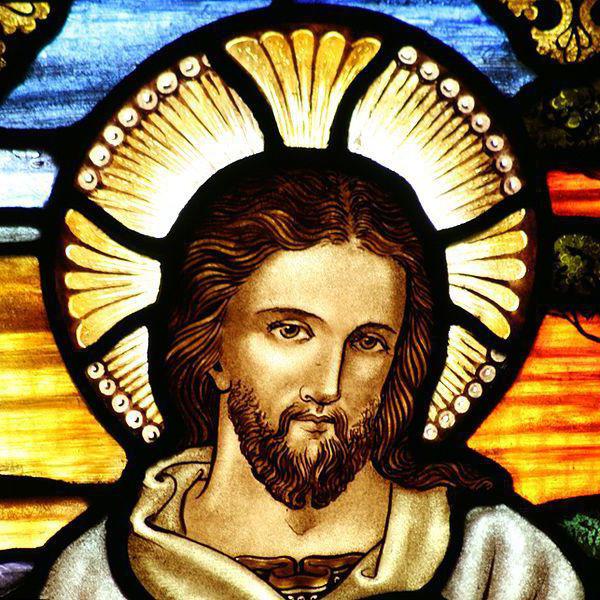Belief in God has surrounded man since infancy. In childhood, this still unconscious choice is associated with family traditions that exist in every home. But later, a person can consciously change faith. How are they similar and how do they differ from one another?
The concept of religion and the background of its appearance
The word "religion" comes from the Latin religio (piety, shrine). This attitude, behavior, actions based on belief in something superior to human understanding and supernatural, that is, sacred. The beginning and meaning of any religion is faith in God, regardless of whether he is personified or impersonal.
 Several prerequisites for the emergence of religion are known. First, for centuries, man has been trying to go beyond the borders of this world. He seeks to find salvation and comfort beyond, sincerely needs faith.
Several prerequisites for the emergence of religion are known. First, for centuries, man has been trying to go beyond the borders of this world. He seeks to find salvation and comfort beyond, sincerely needs faith.
Secondly, a person wants to give an objective assessment of the world. And then, when he cannot explain the origin of earthly life only by natural laws, he makes the assumption that supernatural power is applied to all this.
Thirdly, a person believes that various events and incidents of a religious nature confirm the existence of God. The list of religions for people of faith already serves as real proof of the existence of God. They explain it very simply. If God did not exist, there would be no religion.
The oldest species, forms of religion
The origin of religion happened 40 thousand years ago. It was then that the appearance of the simplest forms of religious beliefs was noted. They managed to learn about them thanks to the discovered burial places, as well as cave and cave paintings.
In accordance with this, the following types of ancient religions are distinguished:
- Totemism. A totem is a plant, animal or object that was considered sacred in a particular group of people, tribe, clan. The basis of this ancient religion was belief in the supernatural power of a talisman (totem).
- Magic. This form of religion is based on belief in a person’s magical abilities. Using symbolic actions, the magician is able to influence the behavior of other people, natural phenomena and objects from the positive and negative sides.
- Fetishism. From among any objects (an animal or human skull, a stone or a piece of wood, for example), one was chosen to which supernatural properties were attributed. He was supposed to bring good luck and protect from danger.
- Animism. All natural phenomena, objects and people have a soul. She is immortal and continues to live outside the body even after his death. All modern types of religions are based on faith in the existence of souls and spirits.
- Shamanism It was believed that the head of the tribe or clergyman had supernatural power. He entered into a conversation with the spirits, listened to their advice and complied with the requirements. Belief in the power of the shaman is the basis of this form of religion.

Religion List
In the world there are more than a hundred different religious movements, including the oldest forms and modern movements. They have their own time of occurrence and differ in the number of followers. But at the heart of this large list are the three most numerous world religions: Christianity, Islam and Buddhism. Each of them has different directions.
 World religions can be represented as a list as follows:
World religions can be represented as a list as follows:
1. Christianity (almost 1.5 billion people):
- Orthodoxy (Russia, Greece, Georgia, Bulgaria, Serbia);
- Catholicism (Western European countries, Poland, Czech Republic, Lithuania and others);
- Protestantism (USA, UK, Canada, South Africa, Australia).
2. Islam (about 1.3 billion people):
- Sunnism (Africa, Central and South Asia);
- Shiism (Iran, Iraq, Azerbaijan).
3.Buddhism (300 million people):
- Hinayana (Myanmar, Laos, Thailand);
- Mahayana (Tibet, Mongolia, Korea, Vietnam).
National religions
In addition, in every corner of the world there are national and traditional religions, also with their own directions. They arose or gained special distribution in certain countries. On this basis, these types of religions are distinguished:
- Hinduism (India);
- Confucianism (China);
- Taoism (China);
- Judaism (Israel);
- Sikhism (Punjab state in India);
- Shintoism (Japan);
- paganism (Native American tribes, peoples of the North and Oceania).
Christianity
This religion originated in Palestine in the eastern part of the Roman Empire in the 1st century AD. Her appearance is associated with faith in the birth of Jesus Christ. At age 33, he suffered a martyrdom on the cross to atone for the sins of men, after which he resurrected and ascended into heaven. Thus, the son of God, who embodied the supernatural and human nature, became the founder of Christianity.
The documentary basis of the doctrine is the Bible (or Holy Scripture), consisting of two separate collections of the Old and New Testaments. The writing of the first of them is closely connected with Judaism, from which Christianity originates. The New Testament was written after the birth of religion.
 The symbols of Christianity are the Orthodox and Catholic cross. The main provisions of faith are defined in dogmas, which are based on faith in God, who created the world and man himself. The objects of worship are God the Father, Jesus Christ, the Holy Spirit.
The symbols of Christianity are the Orthodox and Catholic cross. The main provisions of faith are defined in dogmas, which are based on faith in God, who created the world and man himself. The objects of worship are God the Father, Jesus Christ, the Holy Spirit.
Islam
Islam, or Islam, was born among the Arab tribes of Western Arabia at the beginning of the 7th century in Mecca. The founder of religion was the prophet Muhammad. This man from childhood was prone to loneliness and often indulged in pious thoughts. According to the teachings of Islam, at the age of 40, the heavenly messenger Dzhabrail (archangel Gabriel) came to him on Mount Hira, who left an inscription in his heart. Like many other world religions, Islam is based on faith in one God, but in Islam it is called Allah.
 Scripture is the Qur'an. The symbols of Islam are the star and the crescent. The main provisions of the Muslim faith are contained in dogmas. They must be recognized and unquestioningly carried out by all believers.
Scripture is the Qur'an. The symbols of Islam are the star and the crescent. The main provisions of the Muslim faith are contained in dogmas. They must be recognized and unquestioningly carried out by all believers.
The main types of religion are Sunnism and Shiism. Their appearance is connected with political disagreements between believers. So, Shiites to this day believe that only the direct descendants of the Prophet Muhammad carry the truth, and the Sunnis think that this should be an elected member of the Muslim community.
Buddhism
Buddhism originated in the VI century BC. Homeland - India, after which the teachings spread to the countries of Southeast, South, Central Asia and the Far East. Given how many other most numerous types of religions exist, we can safely say that Buddhism is the oldest of them.
The founder of the spiritual tradition is Buddha Gautama. This was an ordinary person whose parents were honored with the vision that their son would grow up to be Great Teachers. The Buddha was also lonely and thoughtful, and very quickly turned to religion.
There is no object of worship in this religion. The goal of all believers is to achieve nirvana, a blissful state of insight, to free oneself from their own fetters. Buddha for them is a kind of ideal that should be followed.
 Buddhism is based on the doctrine of four Noble Truths: about suffering, about the origin and causes of suffering, about the true cessation of suffering and the elimination of its sources, about the true path to ending suffering. This path consists of several stages and is divided into three stages: wisdom, morality and concentration.
Buddhism is based on the doctrine of four Noble Truths: about suffering, about the origin and causes of suffering, about the true cessation of suffering and the elimination of its sources, about the true path to ending suffering. This path consists of several stages and is divided into three stages: wisdom, morality and concentration.
New religious movements
In addition to those religions that originated a long time ago, new creeds still continue to appear in the modern world. They are still based on faith in God.
The following types of modern religions can be noted:
- Scientology
- neo-shamanism;
- neopaganism;
- burkhanism;
- neo-Hinduism;
- raelites;
- oomoto;
- and other currents.
This list is constantly being modified and supplemented. Some types of religions are especially popular among show business stars.For example, Scientology is seriously keen on Tom Cruise, Will Smith, John Travolta.
 This religion arose in 1950 thanks to science fiction writer L.R. Hubbard. Scientologists believe that any person is initially good, his success and peace of mind depend on himself. According to the fundamental principles of this religion, people are immortal beings. Their experience has a longer duration than one human life, and their abilities are unlimited.
This religion arose in 1950 thanks to science fiction writer L.R. Hubbard. Scientologists believe that any person is initially good, his success and peace of mind depend on himself. According to the fundamental principles of this religion, people are immortal beings. Their experience has a longer duration than one human life, and their abilities are unlimited.
But everything is not so clear in this religion. In many countries, Scientology is believed to be a sect, a pseudo-religion with great capital. Despite this, the current is very popular, especially in Hollywood.









False religion is the most powerful informational weapon for controlling the consciousness and behavior of people in the interests of a very narrow group of conspirators who aspire to power of any value and to establish their own dominance. They crop information from the people and immerse the people in a false information field. : open_mouth :: open_mouth :: open_mouth ::